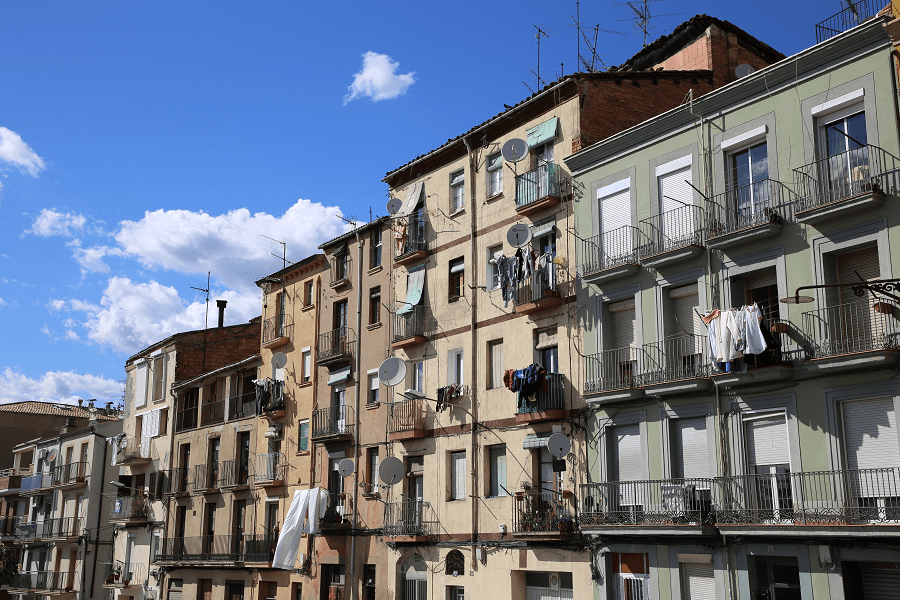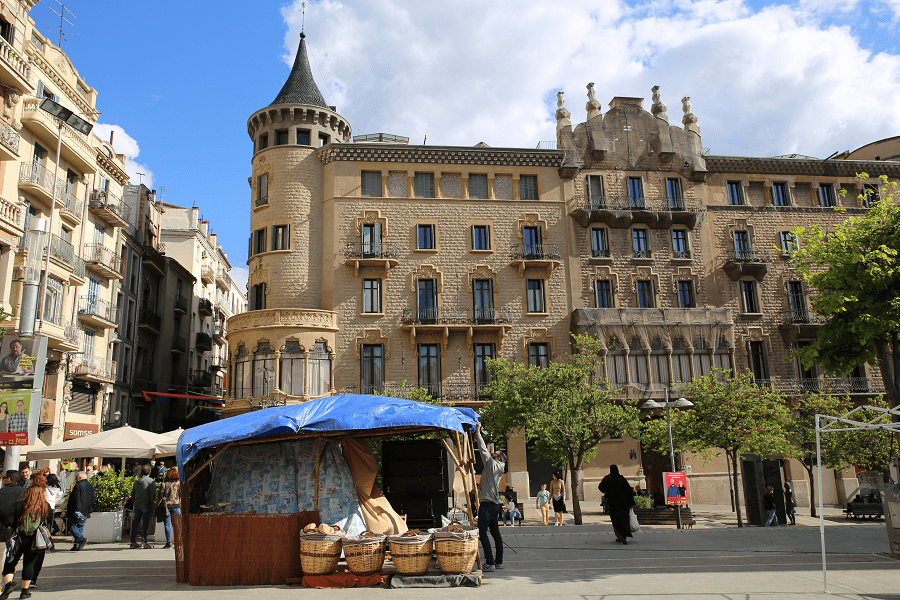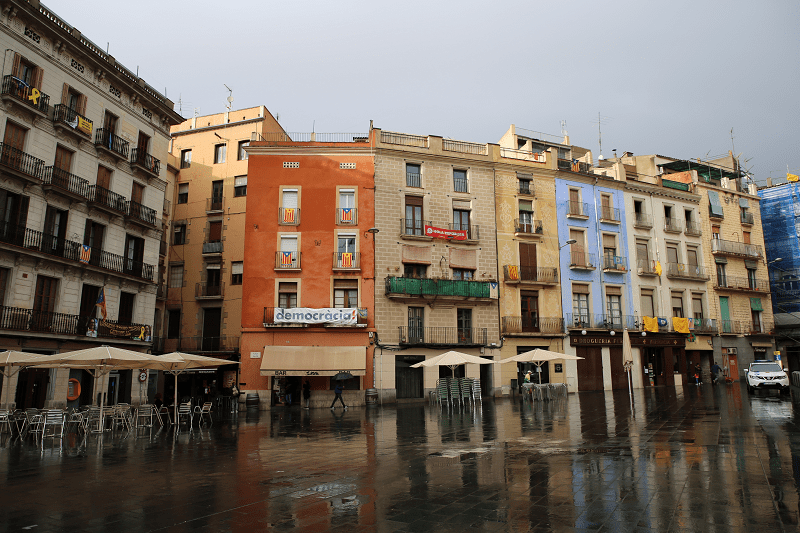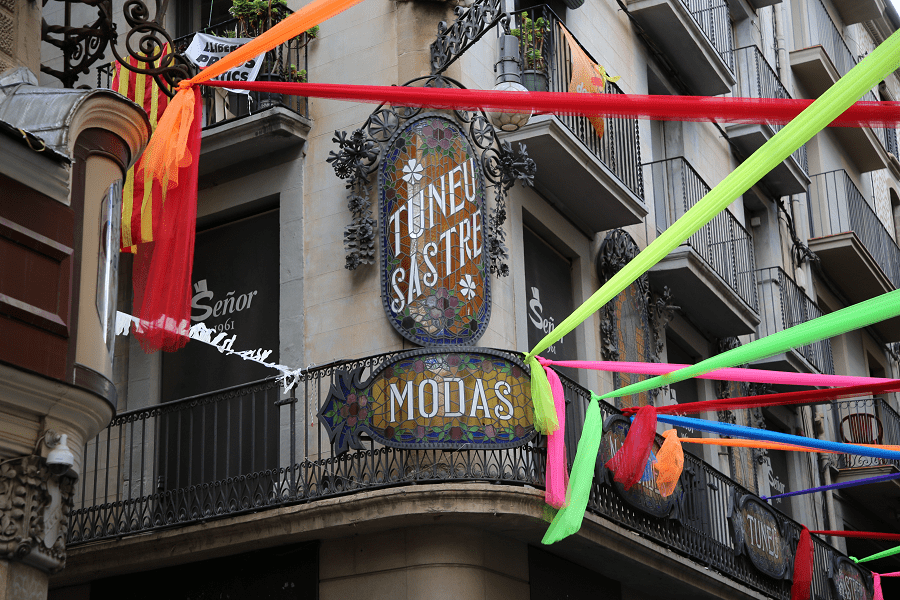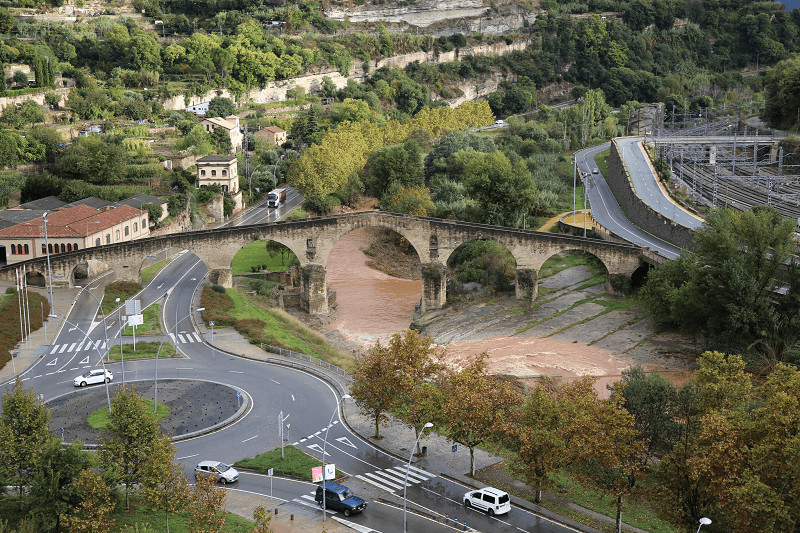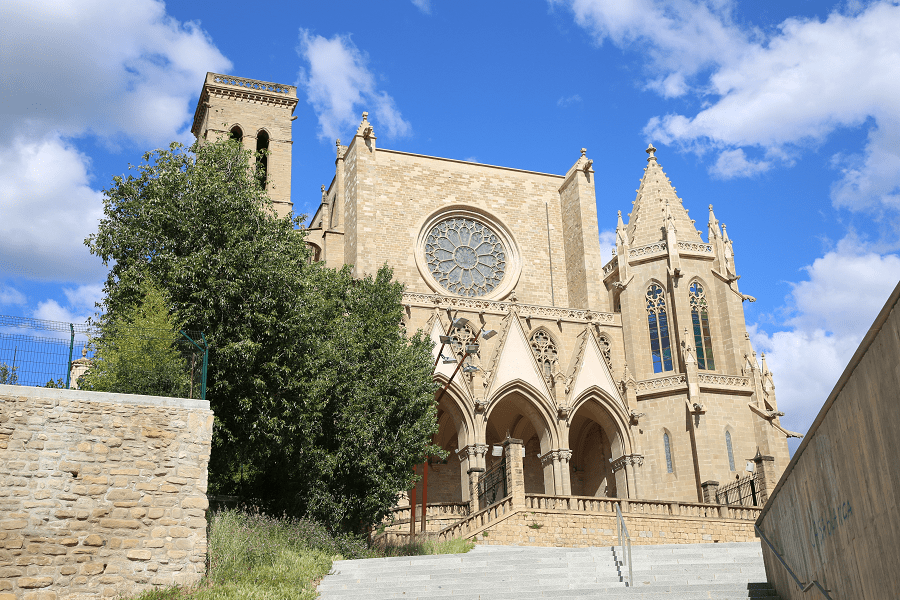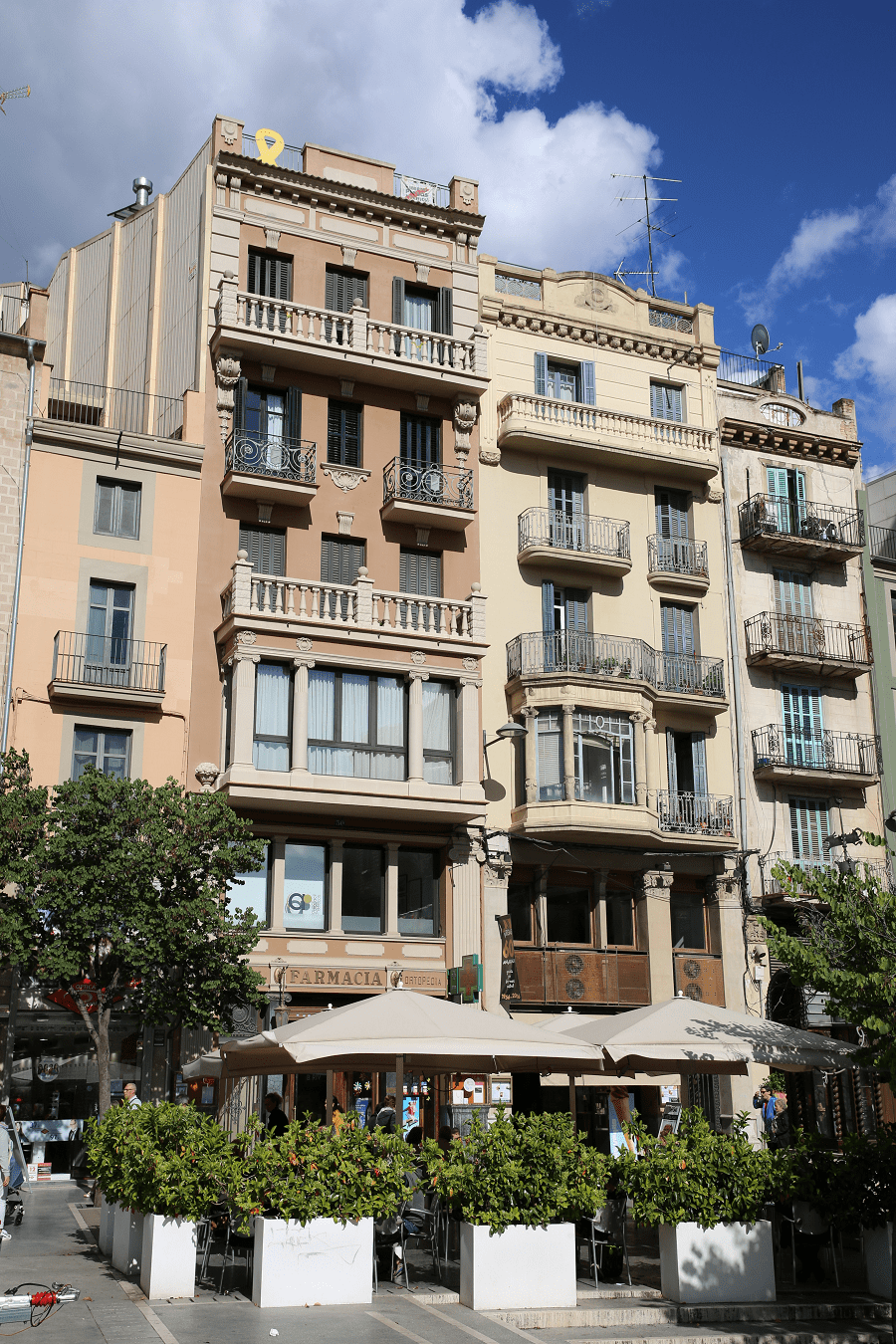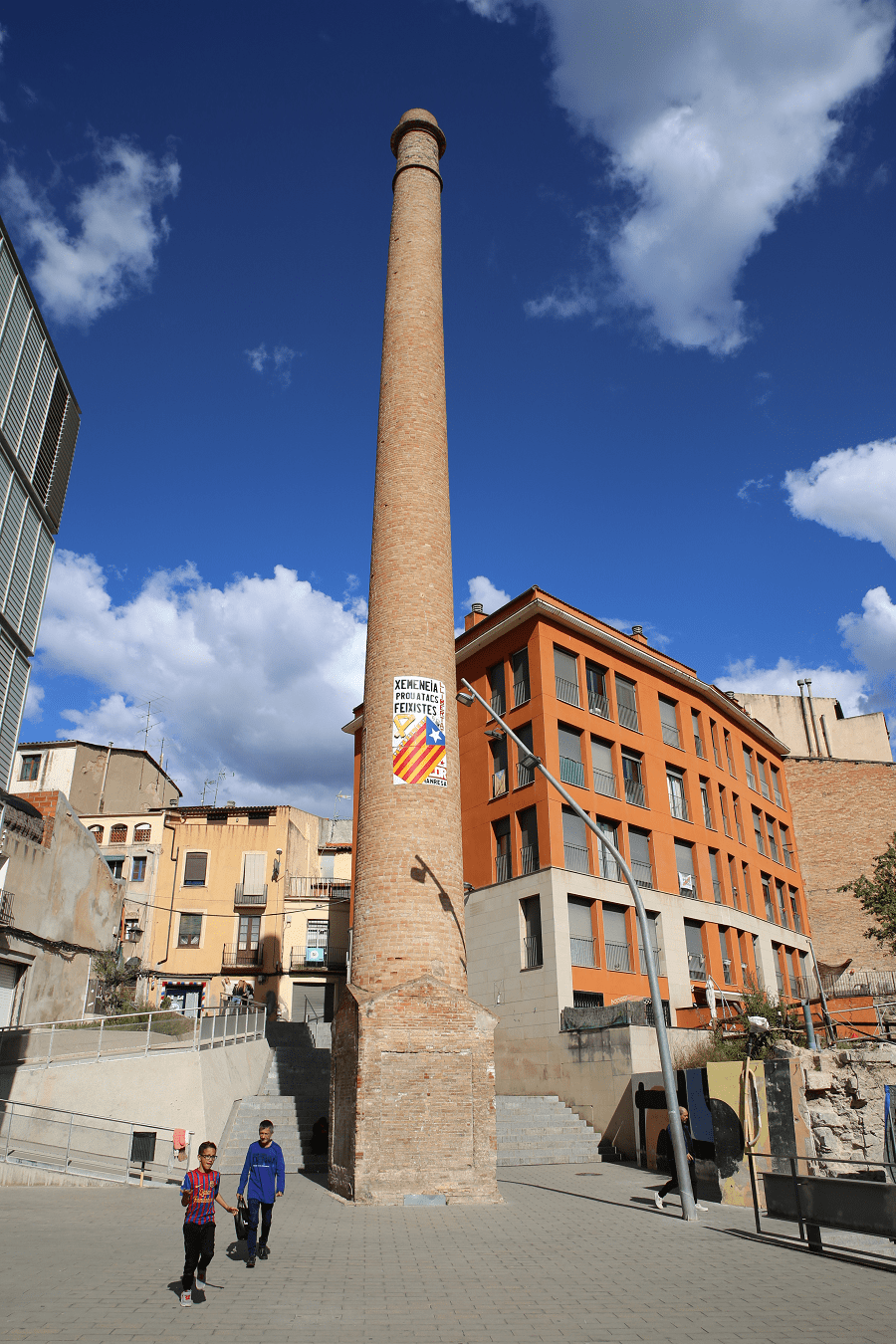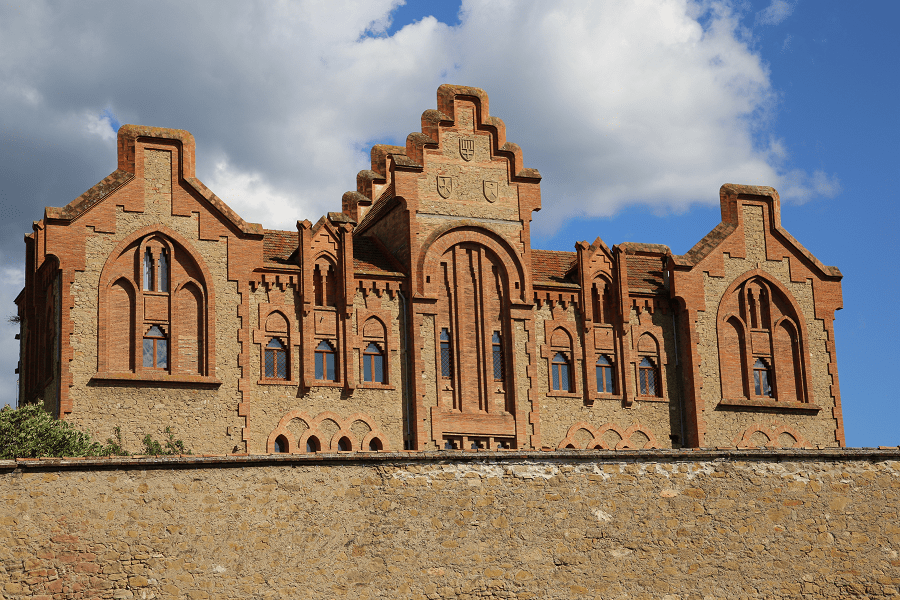Manresa is a municipality and a city in Spain, Catalonia, capital of the county of Bages and central Catalonia. It is located in the Pla de Bages, near the corner where the Llobregat and Cardener rivers converge. With a population of about 76,000 inhabitants, it is the most populated city of Bages and Central Catalonia. It is 65 km north of Barcelona, and marks the boundary between the industrial area around Barcelona and the rural area of the north.
The city forms a very important communications hub, accentuated by the Llobregat axis and the transverse axis, between the mountains and the sea, between the interior plains of Urgell and La Segarra and the eastern regions of the country. Regarding the economy, Manresa stands out in the textile, chemical and machinery industry, although in the last decades it has replaced the industry by the commerce. The city also stands out because of its medieval complex, with bridges over the Cardener River and its Gothic cathedral. In addition, in this city there are also baroque-style churches, as well as interesting modernist buildings.
During the French war, the Manresa subject was defeated by the French troops at El Coll del Bruc (June 1808), although the French, already in retreat, burned and demolished much of the city. After the expulsion of the Napoleonic troops, the Manresans rebuilt the city from the debris. See here more history
Main travel sights, architecture and what to do?
The history of Manresa is marked by the different periods that the city has experienced. A legacy that today is explained through several hidden corners of history, such as Modernist buildings, medieval streets and Baroque houses.
Among all the interesting heritage and tourist attractions that the city has to offer, we present you the most outstanding places and monuments.
La Seu de Manresa is the main Manresa monument
The gothic church that we can contemplate today was designed by Berenguer de Montagut, who also designed works as important as Santa Maria del Mar in Barcelona. The architectural conception is characteristic of the Catalan Gothic: austerity in the decoration and predominance of the horizontal volumes, with a large nave width. The works began in 1325, but until the end of the 15th century the temple was not finished. The main façade is Neogothic, designed by Alexandre Soler i March and advised by Antoni Gaudí.
La Seu is also of great interest for the works of art that it conserves in the interior, especially for the set of Gothic altarpieces.
The Cova of Sant Ignasi
In one of the grottos of this so typical place of the Manresa landscape, enclosed but with a frontal view of the mountain of Montserrat, according to the tradition St. Ignatius of Loiola shut himself for a season to meditate and write the famous Spiritual Exercises (Exercicis Espirituals).
Over the years, a simple coveta has become the most monumental and lavish building in the city. Above the cave, a great sanctuary has been built, which has transformed into undoubtedly an Ignatian par excellence and one of the universal referents of the Jesuit world.
In La Cova, landscape and architecture fuse in a surprising way, forming an artificial façade on the hill of Sant Bartomeu, which is one of the most visible elements of the entrance to Manresa.
Carrer del Balç
The interpretation center of the Carrer del Balç: a journey through medieval times in Manresa.
Located in the outbuildings of an old mansion, the interpretation center offers a multimedia installation that puts value in a unique heritage set, and at the same time, reveals how Manresa was of the 14th century. A story narrated and personalized in the figure of King Pere III the Ceremonious (rei Pere III el Cerimoniós), the great founding monarch of the main institutions of the Catalan state.
The medieval street: a unique space
Balç Street (Carrer del Balç), which was part of the core of the medieval city that emerged around the market, on Plaça Major, is a magnificent example of medieval urbanism. Narrow and winding path, the street adapts to the profile of a balcony, with different levels, and runs under the porches that rise between house and house in order to take advantage of the scarce space that existed at inside of the walled city.
This street still retains the essence of a medieval atmosphere.
Activities
In Carrer del Balç activities are carried out for school children, theatrical visits, gastronomic activities, and the space can be even rented for celebrations and / or events.
The historical center of Manresa is located in what was the city within the medieval wall, which was extended with three periods as the city grew, from the twelfth to the nineteenth century.
Torre de Sobrerroca
The square base tower was built between the 13th and 14th centuries. This portal was one of the eight that closed the wall and had a double function: to allow the entrance and exit of the city and exercise control point. It has recently been restored and can be accessed indoors in festivals of the city or with guided tours of the Tourism Office of Manresa.
Historic center of Manresa
During the fourteenth century, Manresa underwent a great urban expansion, from being a small fortified village to a true city. From this period of expansion and growth, we can still find important monuments and vestiges, most of which are located in the historical center, such as the Cathedral of La Seu, or the Sobrerroca Tower and the network of streets and squares with centuries of History, such as the Plaza Mayor, Carrer del Balç, Carrer Sant Miquel, Carrer d’en Botí or La Plana del Om.
The other great phase of manresana expansion, during the XVI-XVIII centuries, has also left its mark in the historical quarter of the city, with numerous buildings of the civil baroque, such as the city council of Manresa, the former courts and private houses such as Ca l’Asols or Ca l’Oller.
Pont Vell
The Old Bridge (el Pont Vell)) crosses the Cardener River at the southwestern entrance of Manresa.
Of Roman origin, the present one is a faithful reconstruction of the medieval bridge that dates from XII century, from which the bases of the central arcs are conserved. The bridge was destroyed in 1939 due to a bombing and was rebuilt between 1960 and 1962. The bridge draws eight half-point arches with a maximum height of 25 meters above the river.
Old convent and Church of Carmen
Former Gothic church, built by Berenguer de Montagut, where the Miracle of Light took place on February 21, 1345. For many years it housed a large altarpiece on the main altar, nowadays a part of it is preserved at the museum Comarcal of Manresa.
According to tales, there was no day that Ignasi de Loiola did not visit the religious buildings of La Seu, Sant Domènec and Carme, during his stay in Manresa between 1522 and 1523 .
In the days of Ignatius, it was two hundred years already since the works of the group formed by the church and the convent of El Carme had begun. At the beginning of the 16th century the different chapels of the temple had been built – many of which had been provisionally covered with wood and roof – and the gothic cloister was virtually finished.
During the Civil War the church was demolished and later reconstructed according to the project of Joan Rubió Bellver. The temple was not finished from the outside due to lack of financing. Next to the church there was the convent of the Carmelite nuns (convent dels monjos carmelites), from which cloister arcades are preserved.
Convent de Santa Clara
Convent of medieval origin, occupied by a community of clarisse nuns. In the seventeenth century dominican nuns where in residence at this convent. In 1904, the architect Alexandre Soler i March projected the extension of the convent and designed a new structure for the western façade, in a clearly modernist style.
When Ignasi de Loiola arrived in Manresa, the monastery was occupied by a community of clarisse nuns, the feminine branch of the Franciscan order. According to tradition, the pilgrim used to sit at the entrance pediments to hear the songs of the nuns.
At this point – at the time of Ignasi, at the foot of the old path Ral de Barcelona (camí ral de Barcelona), one of the branches of the canal Sèquia de Manresa was coming from the Guix area. This branch supplied water to the irrigator of the Escodines and the Vall del Paradís (Font de Fans). Afterwards, the Capuchin and the Jesuits will receive water for the orchards of the respective convents of Saint Bartholomew and the Cave. The mouth water was channeled by nearby sources.
Passeig Pere III
Promenade Pere III, along with Angel Guimerà street, is the main shopping center of Manresa. It has a length of 2 km, from Plaça de Sant Domènec to Carretera de Vic street. We can distinguish three different sections.
It was built during the 19th century, as part of the first extension of the city after demolition of the walls in 1819. It was inaugurated in 1891 and it was the place where the bourgeoisie of Manresa began to establish its residences; These were wealthy people who funded modernist art that can be found walking in this area: the Casino, Casa Gabernet Espanyol, the Lluvià Tower, Casal Regionalista, etc.
The name of the Passeig Pere III was placed in 1928 in honor of Pere el Cerimoniós.
The Casino
Considered the main modernist building in Manresa, the Casino was the work of Ignasi Oms i Ponsa.
Since its inception, in 1906, it worked as a social club for the wealthy classes and as a gambling space, until the Francoist dictatorship illegalized this practice. At that time, the so-called Casino of the Gentlemen began a progressive decline that led it to close its doors in the 1970s. And it was not until 1999, after a comprehensive renovation, that the building returned to life with the inauguration of a great public library and a cultural center.
Parc de la Sèquia
To overcome the drought suffered by Manresa in the middle of the 14th century, the Sèquia was built, which today we can enjoy in the form of a park with a leisure and play options. With a route of 26 km and an unevenness of 10 m it surpasses torrents and streams thanks to thirty aqueducts and mines.
The path parallel to the Sèquia dates from the same times, it has been used for the constant maintenance of the canal by the sequiaires of the Board of the Sèquia (la Junta de la Sèquia). Nowadays, this path has been restored so that visitors can enjoy the footpath on the Sèquia route. Crossing forests, orchards and crops, one can discover the natural wealth of the Bages plain. The route can be done from one end to the other, without too much difficulty, or in small or medium walks, usually returning to the place where it has begun.
The facilities and spaces that make up the Parc de la Sèquia are: the Sèquia, the Parc de l’Agulla and the Visitors Center of the Parc de la Sèquia, the Can Font Water Center (el Centre de l’Aigua de Can Font) and the Museum de la Technique of Manresa
Oller del Mas
The medieval Castle Oller del Mas, originally from the 10th century, opens its doors to visit and experience in person the wine project that is carried out. Surrounded by a farm of more than 400 hectares of crops and under the watchful eye of the venerated mountain of Montserrat, the wines that are elaborated here will not leave you indifferent. 35ha of certified organic vineyards are the starting point for obtaining high quality wines.
Wine tourism activities: Guided tours and professional visits. In the Castle, the vineyards, the production plant and the barrel room, all accompanied by a wine tasting. They have an 18-hole Pitch & Putt field, restaurant, paddle courts and pools where you can combine wine, sports and relaxation. Own restaurant and local meals in the vineyard.
Main museums
Museum of Technology
The Manresa Museum of Technology (Museu de la Tècnica de Manresa) occupies the space of the monumental building of the Old Depots, which collected and stored the water of the Sèquia. They were built between 1861 and 1865 by Marià Potó master builder, and served to provide the city’s first water distribution network.
The building has three identical and independent tanks of 800m2 each, covered by two stone vaults resting on the retaining walls and a row of arches and central pillars, with a surface area of 2,400m2, and a capacity of 12,000m3, water.
The museum hosts two permanent exhibitions: “La cinteria” and “La Sèquia y la Agua”.
Historical Museum of La Seu
The Historical Museum of La Seu is located in a specially sectioned space above the main façade of the Cathedral.
It was opened in 1934 in order to preserve and exhibit works of sacred art that had been disused, out of everyday worship. Among the most important pieces is a Romanesque crucifix of polychrome wood carvings dating back to the 12th century. Also known as the “Florentine frontal” (“frontal florentí”), weaved and embroidered in Florence by Geri di Lapo and acquired for the Cathedral by the manzanera Ramon Saera in 1357. There are also fragments of Baroque altarpieces of the famous Manresan workshops of the Grau and the Sunyer, the silver coffers of the 17th century that had contained the relics of the “Holy Bodies” or numerous objects of jewelry and liturgical clothing.
Manresa Regional Museum (Museu Comarcal de Manresa)
The city of Manresa inaugurated in 1896 the first municipal museum, which has grown over the years and in accordance with the vicissitudes of the history of the city. On a multidisciplinary theme, the collections that are exhibited focus on the art and history of Manresa, Bages and Catalonia.
It occupies two floors in the building of the Old School of Sant Ignasi, where there also are the Comarcal Archive of the Bages and, since 2015, the Pelegrins Reception Center. It is a square-shaped building with a large cloister, of neoclassical order, built by the Jesuit order in the middle of the 17th century, and destined for a teaching center.
The visit to the Museum makes us participate in a time journey through more than 6000 years: from prehistory to the present, we will follow the thread of the history and the art of the country. Throughout this itinerary we will be reminded of some facts and we will enjoy particularly attractive pieces and important collections such as the medieval ceramics decorated in green and manganese called “manresana”, or the important set of works of sculptures gilded and polychromed, of the baroque era. Another interesting room is dedicated to the work of Josep Mestres Cabanes, a Manresa-based stage designer mainly recognized for his work at the Teatre Liceu in Barcelona.
The museum showcases the history of the 20th century through the Memories Space ( l’Espai Memòries), a unique project of art and research in the context of historical memory. In this space, various exhibitions and activities are carried out on work programs, which are renewed annually, in order for visitors to be active agents in them.
Valentí Masachs Geology Museum
The Geology Museum of Valentí Masachs(El Museu de Geologia Valentí Masachs) is located at the Polytechnic College of Engineering of Manresa (l’Escola Politècnica Superior d’Enginyeria de Manresa) and is the geology museum of the UPC. It was founded in 1980 and Dr. Valentí Masachs was its first curator.
It is a museum different from the traditional museums of geology, because apart from the basic collections of minerals, fossils and rocks of the Catalan Countries and others, it showcases the utility that these elements of the Earth have for people, all in a very pedagogical and attractive way that facilitates the work of the teachers and assists the learning of their students.
At the same time, during their visit to the museum, students and visitors are invited to reflect, debate and take personal and collective initiatives, especially in the sections: The Earth is being depleted, Radioactivity: advantages and disadvantages, and Minerals and People.
Surely both the student and the visitor will leave the museum, having learned many more things than they knew before entering this classroom open to everyone.
At the moment the museum has a collection of about 5500 minerals, 2400 rocks and about 3400 fossils.
Major events and festivals
The Fira Mediterrania in Manresa is held the first complete weekend in November every year. It is the main meeting point and trade fair of the mediterranean world, folk and roots artists with distributors, organisers, agencies, labels, export offices, instrument makers and dealers, journalists and other professionals.
Shopping in Manresa
Manresa has a commercial center of first class, being a benchmark in Central Catalonia. From the Plaza Mayor, down St. Michael Street and until the first stretch of the Paseo Pere III you will find fashion and shoes shops, appliances, pastry shops, houseware and much more.
Cuisine and restaurants
In the city center there are more than 20 restaurants of a fairly high level. At the same time, quality, prices and service mean the major tourist centers of Catalonia, for example, Barcelona offer something more.
Shortest distances
From Girona 1 h 22 min (122 km) via C-25
From Lleida 1 h 15 min (112 km) via A-2 and C-25
From Barcelona 59 min (57.5 km) via C-16
From Madrid 5 hr 55 min (575 km) via A-2
From Andorra 1 h 55 min (141 km) via C-16
Main information
Area: 41.6 sq km
Population: 76 200
Coordinates: 41°43′46″N 1°49′38″E
Language: Spanish, Catalan
Currency: Euro
Visa: Schengen
Time: Central European UTC +1




